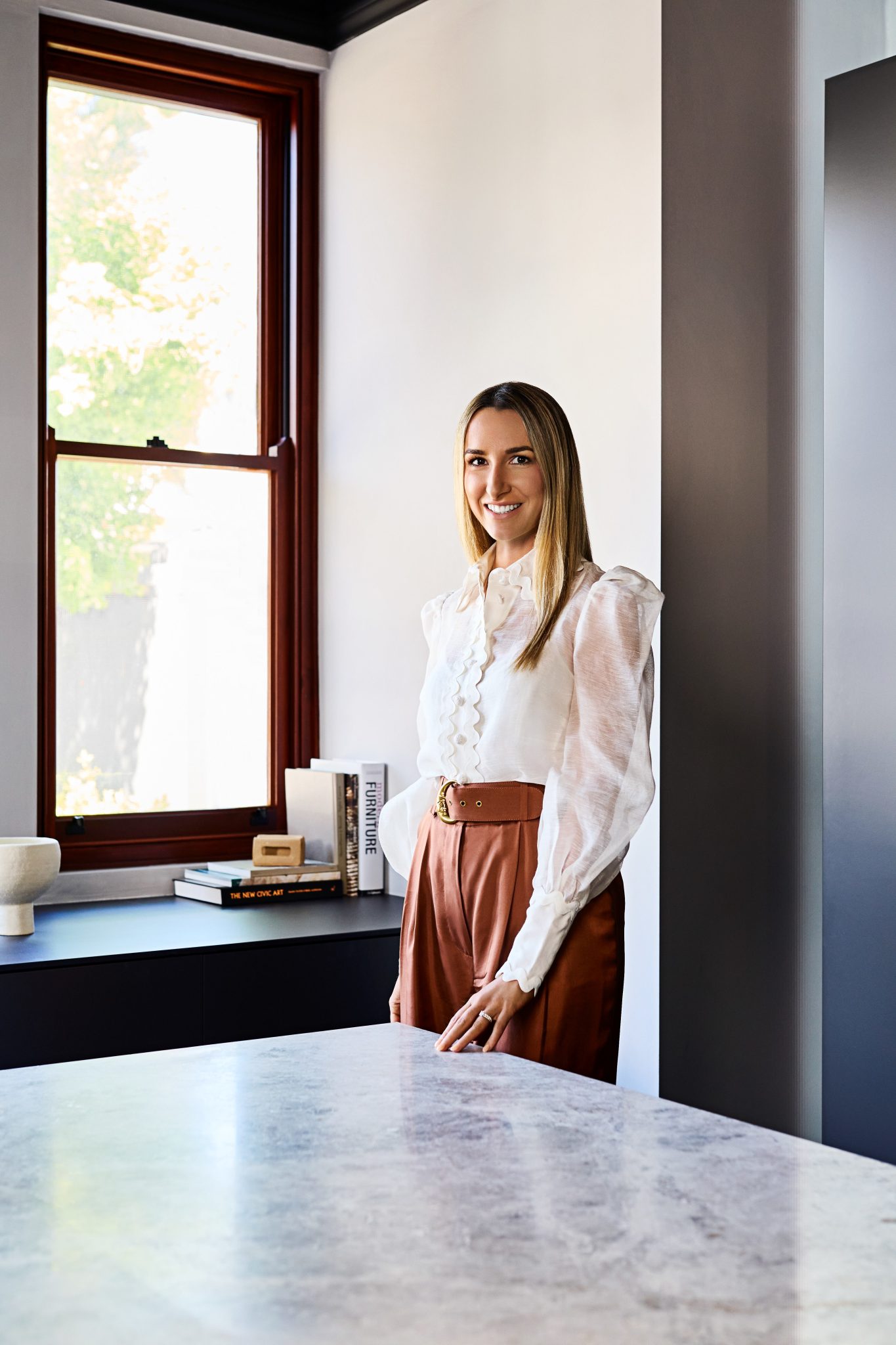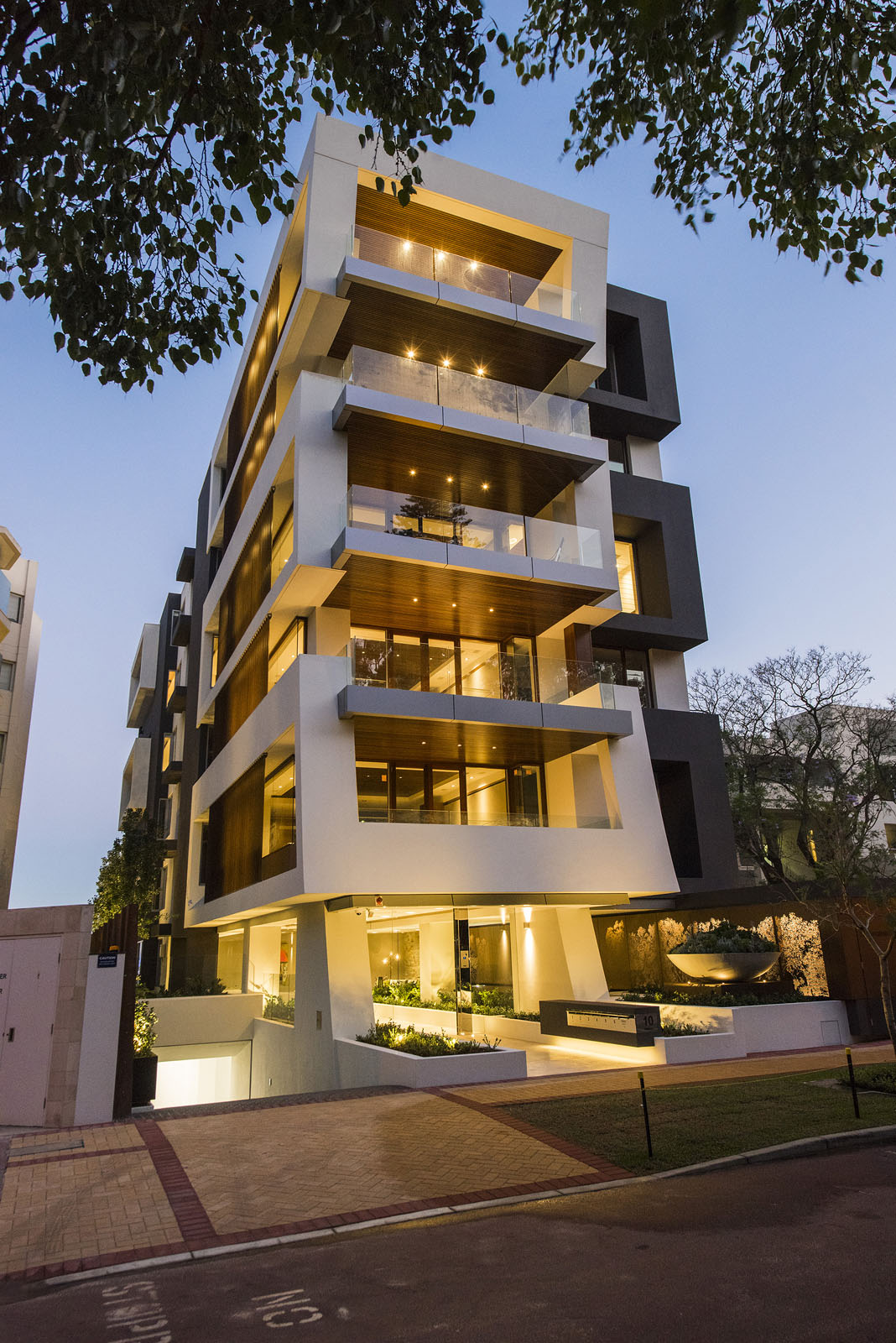Meet the Architects
2 Minute Read
At Giorgi, our luxury residential designs are crafted to be both functional and beautiful, reflecting the true essence of space and the WA lifestyle. Meet our residential architects who specialise in designing urban modern homes that embody the best of contemporary living.

LOGAN DONGRAY
What was your path to becoming an architect?
My parents embarked on their first residential build for our new family home when I was a teenager. I enjoyed visiting the construction site after school and watching the process. I was captivated by the entire process and even found computer software that allowed me to create a digital model of the house as it was being constructed. This experience sparked my interest in pursuing a five-year course at Curtin University. Throughout this time, I travelled extensively exploring architecture in different countries, and still do today.
As a Residential Architect in Perth, how do you approach your projects, and what is the importance of a strong material palette?
Every site and building deserves a unique and custom solution. A thorough site analysis is essential to understand the site conditions. I always explore multiple options and arrangements to find the most suitable solution.
A well-considered floor plan lays the foundation for a good elevation. Thinking in three dimensions while creating the plan is crucial, along with establishing a logical layout. The choice of materials can significantly impact the overall aesthetic. I prioritise the use of natural materials as they are timeless. Curating a carefully selected material palette and incorporating stone, timber, concrete, and glass are strategies I employ to create timeless enduring designs.
Can you describe an evolution in your architectural design work from when you began until today?
Over time, I have developed a more holistic approach to design from the outset. Working with a multidisciplinary team including architects, interior designers, lighting designers, landscape architects, and construction experts has evolved my thinking from the early stages of the design process. As a result, initial design presentations are now more carefully considered due to a more developed skillset.
How do the pressures of sustainability impact your design process?
We are now placing greater emphasis on sustainability in response to stricter planning requirements and it is becoming increasingly important in our workflow. The need to prioritise tree retention, as mandated by various local planning policies, is prompting us to develop more innovative design solutions.
How important is it as an architect to maintain a sense of wonder in your work?
A balance is always required to achieve good design between design and construction. As architectural designers, we push the boundaries of construction and think outside the box, continually discussing with the construction team to achieve this perfect balance. We must push the limits to stay relevant and maintain credibility in our work. We want to be proud of what we produce and achieve that by maintaining a sense of wonder.

LEISHA ABERLE
What was your path to becoming an architect?
I have always loved drawing and have been drawn to anything visual. For me, it was always clear that a career in design or architecture was what I was going to do. I moved to Perth to study Architecture at Curtin University and I felt like I’d found my people. During my final years and following university, I worked in architectural practices. I loved the exposure to a wide range of project typologies and gained valuable experience across the lifespan of projects. I progressed my career across the commercial design and residential design sectors. This experience was integral to shaping my response to design today, balancing the brief’s aesthetic and functional aspects.
As a Residential Architect in Perth, how do you approach your projects, and what is the importance of a strong material palette?
My philosophy is rooted in drawing inspiration from a symbiosis of the client’s brief and the site’s unique condition to ensure a thoughtful, purpose-driven design for each project and the creation of a strong sense of place to elevate the everyday. I love bold shapes, large proportions and sculptural formation. The material palette is so important in reinforcing this to tie the components of the home together. I move towards robust, authentic materials that stand the test of time and reinforce the architectural form to create timeless and enduring homes. When forms are derived from the site and the brief, we ensure that designs are enduring and timeless. Clear, strong planning is a consistent thread that is important across all briefs – beyond that, each project is imagined with its personality drawn upon by its unique site condition and the clients for inspiration.
What significant discoveries have you made in the area of luxury residential design?
It is important as an architect to keep evolving and staying excited about your work. Every client brief and site is unique and calls for an innovative design response. Recently, there has been a movement towards a more ornate, layered approach to the architecture and interior design of homes in the upper end of the market. My work over time has drawn increasingly from nature’s organic lines. This is visualised through smooth, fluid corners for seamless movement through the floor plan. My projects have curved junctions and sweeping walls to give fluidity of movement, views and access to light.
How do the pressures of sustainability impact your design process?
I always aim to produce passive designs that will perform through good design. The modern client is educated and has an ambition to incorporate sustainability into their homes, incorporating learnings or mistakes of the previous generation to seek out alternative materials and design solutions to past issues. This pushes better design and allows us to experiment with innovative responses to unique situations, functions and climatic conditions.
What are some of the opportunities and challenges the WA architectural landscape faces now?
Through the introduction and implementation of the medium density codes, there is an exciting opportunity to produce premium quality boutique developments that are yet to be prevalent in WA for developers willing to explore new product typologies in the market.
What does Western Australia represent to you?
We are privileged to live in a state that boasts a relaxed coastal lifestyle and a climate that shapes our innate desire to open up the home to the outdoors.
What do you hope to achieve in architectural design that you haven’t yet?
I look forward to bringing the high level of architectural service and finish experienced by our residential clients to medium-density formats, such as boutique apartments, at a level that has yet to be seen in Perth.

GRAHAM HUTTON
What was your path to becoming an architect?
In year eight, I took up the Technical Drawing elective at high school and discovered I loved it. My career path from this love of drafting soon morphed into becoming an architect. My family on both sides was very artistic, with my maternal grandfather being an architect himself.
What significant discoveries have you made in the area of luxury residential design?
There are core areas in a house that will be deemed to be important when it comes to quality design and finish. Most times it is the kitchen and whether or not the client wants to save money by not having a stone benchtop and splashback. When you have lived in the home for a year, and forgotten how much was spent, you will be thankful that you spent a little more on the better material.
Can you describe an evolution in your architectural design work from when you began until today?
I have been studying or practising architecture for nearly 40 years, and in that time, my design ethos changed from an aesthetic aspect as the trends of the time rolled through. From a planning point of view, the changes to my style have come through experience. Certainly, in the commercial space, far more services are required to be shoehorned into a building, along with standards that need to be applied that can sometimes stop us from doing what we want. The trick here is to make them look like an addition to the design but rather a thoughtful integration into the design.
How do the pressures of sustainability impact your design process?
Ensuring that a building relies on less mechanical cooling/heating is certainly an area that all architects should be well versed in. By ensuring our designs are oriented correctly and designed accordingly, we demonstrate our knowledge and skill in allowing sun into the building in winter and stopping it in summer. The key to this, along with our expertise in sustainable design, is good cross-flow ventilation. Beyond this, there is designing using a pallet of materials that keep the carbon footprint to a minimum by using locally sourced materials. Then, at the end of the lifecycle of the building, when it is being replaced, the materials can be reused.
What are some of the opportunities and challenges the WA architectural landscape faces now?
Post-COVID, Perth has seen an increase in immigration to the point where there is very little housing available to purchase or even rent. Added to this is the increase in inflation without wages increasing at the same rate – so the cost of building is becoming further out of reach for many people. It is a tight market. Diversification within the business and what we can offer helps to keep the doors open. You need to continually look at how you can change and adapt to the market.
Which high-end commercial design, luxury residential design or apartment design has given you the most satisfaction thus far?
The Jaguar Land Rover showroom and the Volvo Showroom in Osborne Park were great buildings to work on. The Oxford St. Offices building in Leederville is only on paper currently, but it has been rewarding in that I have worked with the clients to create their ideal office. It has been the culmination of all my experience in the commercial space to be able to do this.
What does WA represent to you?
I arrived in WA at the age of 18 months and have never left – I love living here and have had some great opportunities in my career through living in Perth. The remoteness to the rest of the world is quite unique and one that shouldn’t be taken for granted.
Giorgi is diverse team with a shared vision
Our culture is truly collaborative, enabling design and building experts to work together.
